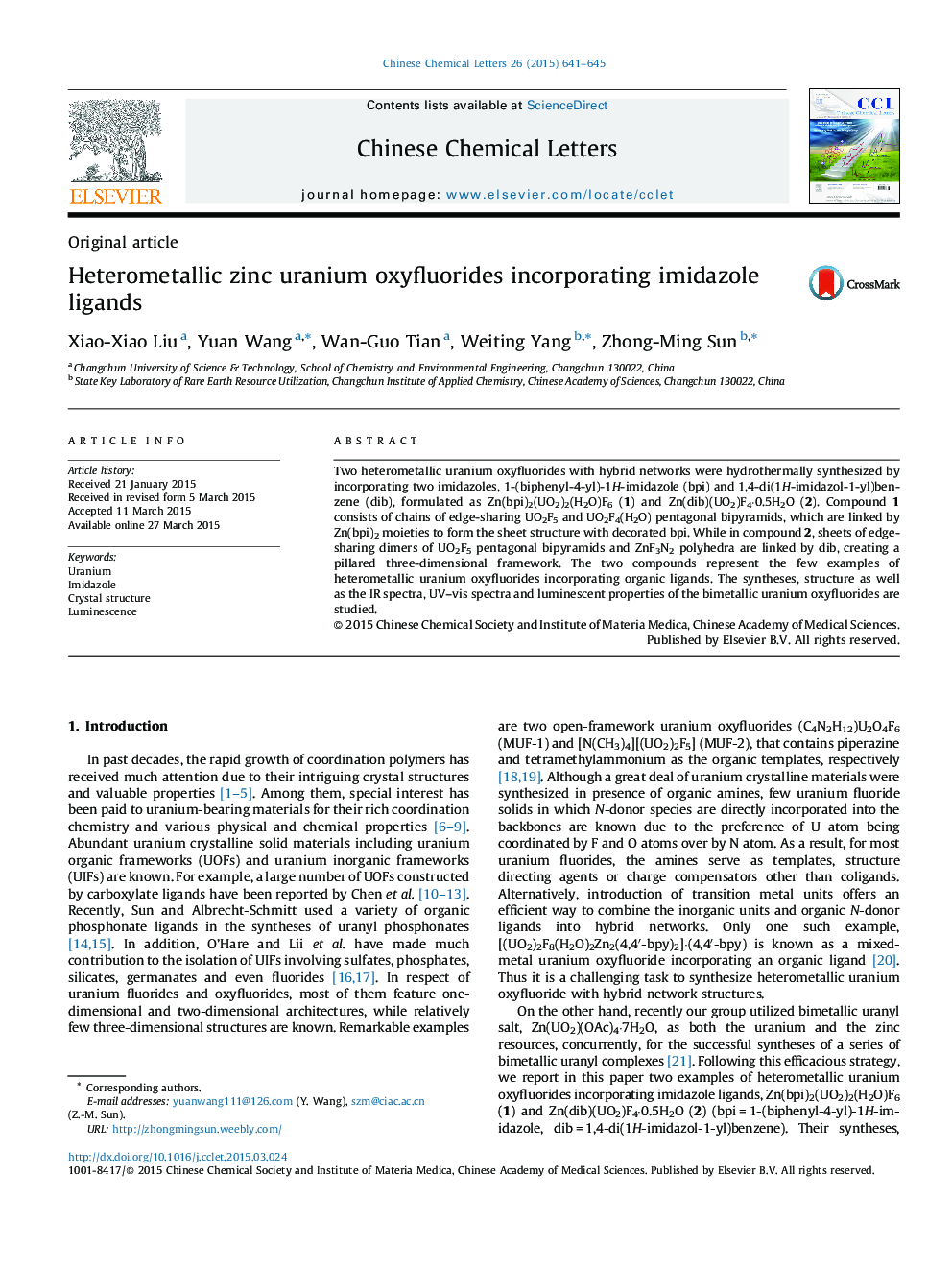| Article ID | Journal | Published Year | Pages | File Type |
|---|---|---|---|---|
| 1254380 | Chinese Chemical Letters | 2015 | 5 Pages |
Two heterometallic uranium oxyfluorides with hybrid networks were hydrothermally synthesized by incorporating two imidazoles, 1-(biphenyl-4-yl)-1H-imidazole (bpi) and 1,4-di(1H-imidazol-1-yl)benzene (dib), formulated as Zn(bpi)2(UO2)2(H2O)F6 (1) and Zn(dib)(UO2)F4·0.5H2O (2). Compound 1 consists of chains of edge-sharing UO2F5 and UO2F4(H2O) pentagonal bipyramids, which are linked by Zn(bpi)2 moieties to form the sheet structure with decorated bpi. While in compound 2, sheets of edge-sharing dimers of UO2F5 pentagonal bipyramids and ZnF3N2 polyhedra are linked by dib, creating a pillared three-dimensional framework. The two compounds represent the few examples of heterometallic uranium oxyfluorides incorporating organic ligands. The syntheses, structure as well as the IR spectra, UV–vis spectra and luminescent properties of the bimetallic uranium oxyfluorides are studied.
Graphical abstractTwo heterometallic uranium oxyfluorides were hydrothermally synthesized by incorporating two imidazoles. Both structures contain inorganic zinc uranyl fluoride sheets, which are further coordinated by bpi and dib, respectively, forming layered and pillared three-dimensional hybrid networks.Figure optionsDownload full-size imageDownload as PowerPoint slide
